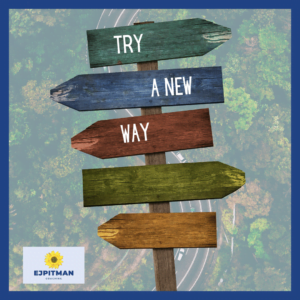I learned many years ago that the longest part of the trip is at it’s end… especially when it is going home. Not just emotionally, but literally when we go to my parents home in Maine. Once we cross the bridge from Portsmouth into Maine, there is little to see besides forest and farmland. For well over 2 hours on Interstate 95, we drive the unvarying landscape.
At some point over the years, I ‘created’ a game where I would pretend it was the first time I had visited Maine. I pulled on the sense of wonder I had experienced each time I had traveled to a new place and willed myself to imagine what it would be like to see Maine for the first time, to be one of those people who has always dreamed of vacationing in Maine. I willed myself to experience these miles as a long fulfilled dream. It didn’t work every time, and it never lasted the full two hours, but it challenged my imagination enough to keep us all safe on the highway.
Similar to the tools our cars include that help us safely navigate trips, our mapped mindset allows us to see things with varying levels of attention and discovery. How clearly do you see when you drive to and from work? How vividly do you remember the last time you popped to the grocery store to get a few things? What do you notice when you go to your favorite restaurant across town? And how aware are you of your surroundings on a first visit?
Visibility changes with familiarity. Less attention is required to do our ordinary things. Most of the time, this is helpful. It lets our brains do other things. Forming habits or breaking habits dives deep into using these familiar pathways. But sometimes, routine leads us astray and we miss important cues like cats crossing in front of us after filling a mug with hot coffee.

You can shake up your visibility experience by choosing a new route. You will not just see different landmarks, but may help your brain untangle an unrelated problem, or shake some ideas loose from your brain branches that have been ripening waiting for the perfect time to drop. Shifts in familiarity introduce a different kind of visibility.
What happens if you write with blue ink instead of black? What if you move your bill paying time to after lunch instead of before leaving work for the day? What if you run your list of errands ‘backwards’ or walk the grocery store the ‘other’ way?
When you find yourself stuck or bored or spinning in mental circles, it might be time to make a shift. Notice how the shadows and light look different when you go a new way. The way you do something all the time is most likely the best way for you to continue. But even if you do something differently only one time, when you return to your normal programming, you will have a renewed awareness and visibility.